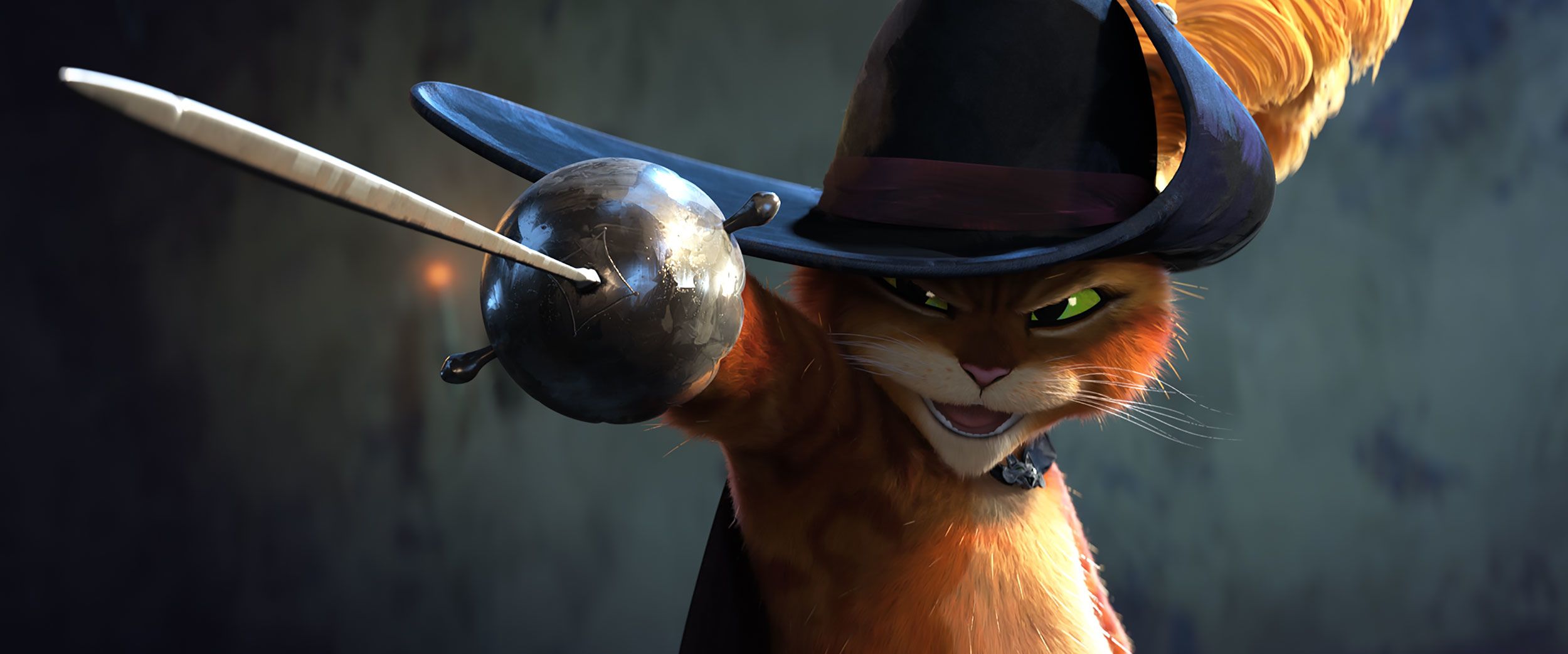In a way, I feel The Good Exorcist and director Josh Stifter are a significant element of Readers Digested (dot) com, at least, in terms of its inception. My brother Scott Moore and I had been participating in Comic Cons and other activities throughout last year, but I have always wanted to substantiate some level of growth on the internet. I will always have a special place in my heart for the years I spent on message boards and that sense of community, which I have never been able to capture anything close to since.
This year is now, of course, infamous for the Coronavirus outbreak, and, as a result, I had a lot of spare time to myself. Like many of you, I was not as productive as I wish I would have been, perplexed by the whole ordeal, but I did, ultimately, create and develop Readers Digested in the time allotted to me.
After noticing Josh Stifter was a filmmaker who was following me on Twitter, I shot him a message inquiring about an interview. I did not know if he was actively following me on Twitter or if he was someone who was following me in response to the networking and feelers I had sent out to try and get people’s attention. For instance, Julia Kato, the voice actress who plays Kimmy and Chucky‘s mom on Rugrats is following me and I have no idea why, but I digress.
Josh, however, was receptive and, in general, came off like a pretty nice guy, agreeing to do an interview with me and even offering a screener of his horror film The Good Exorcist free of charge. I ended up buying a digital copy of the film as a way to show my support, however, those curious can watch the film on the Tubi streaming service.
Josh agreeing to do an interview gave me the confidence to interview directors like Gregory Plotkin who directed Hell Fest, Wolfcop director Lowell Dean, the director of the Hellhouse series Stephen Cognetti, and, even my childhood hero, Robert Englund.
The Good Exorcist’s cast comprises itself of Daniel Degnan, Brittaney Ortiz, and Avery Merrifield, among others, and was involved in a television series called Rebel without a Crew.
For the uninitiated, Rebel without a Crew is a program on the El Rey Network created by Robert Rodriguez. In 1992, Rodriguez directed the first installment of his Mexico Trilogy called El Mariachi, and did so with a budget of only seven-thousand dollars. Thus, the idea behind the Rebel without a Crew series was for other filmmakers to create a film for the same budget in a two week period. Robert Rodriguez went onto direct films like Sin City and Alita, as well as the modern arthouse classic series Spy Kids. All caught up? Fantastic!
The film is filled to the brim with Robert Rodriguez’s influence, whether it be an exorcist named Father Trejo, a reference to Danny Trejo who portrayed the titular role in the film Machete, or Brittaney Ortiz’s character donning an eyepatch, akin to Michelle Rodriguez’s performance in the same film. The aesthetic and special effects of The Good Exorcist, in general, are stylized in the grindhouse genre, a genre that may put off many of you. I can understand that.
The horror genre is popular among early filmmakers because of how accessible it is and how often it can be pursued on a shoestring budget. Thus, they exploit the age-old philosophy of the unknown and what’s not seen serving as more important than what is. The grindhouse genre, however, is rarely like that. Instead, it attempts grandiose spectacle in spite not having the financial means or resources to do it in a way that general audiences are accustom to. Whether the result is win, lose, or draw, you can only hope that, if it misses and amounts to a garbage fire, it is, at least, an entertaining one.
The Good Exorcist and, at the very least, the film Josh Stifter ended up making, is a good fit for the grindhouse genre. There is a nervous excitement and energy that pulsates through it, whether it be from the boisterous score, comprised of loud instruments, or the crude opening credits, this is a film that is unabashedly problematic, and I mean that as both a criticism and a compliment. Whichever way you decide to take it will depend on your awareness and stance on the genre itself.
The concept of The Good Exorcist is simple and straightforward enough. This is something I would actually consider as an important takeaway, I think, or, at least, it would be if I were trying to persuade or dissuade myself from watching it in hindsight. Something I feel often is lost on a lot of storytellers, especially ones who are either inexperienced or trying a new medium, is they are swept away by other fundamentals, and don’t remember to focus on basic structure. In other words, if you don’t have a lot of resources and you don’t have a lot of time to polish and finetune your script, then, you have to have a level of discipline and know when to reel it back. Don’t try to make Memento if you don’t won’t be able to apply the proper attention to detail that is required.
Father Gil is a disillusioned wandering priest that finds himself at a ranch where a mysterious demonic presence has made itself known. He now tasks himself with dispelling the ranch of the evil entity.
Although there are other nuances and character developments sprinkled in, that is, more or less, The Good Exorcist.
Daniel Degnan dons the cloth as our story’s main protagonist, and does particularly well. The actor is likeable and charming, and does so without coming off as overbearing or overstated. The character is comparable, in some respects, to Ash from Evil Dead, a series I think this film would likely fall in the same ilk as, especially the series later on. His character is absolutely my favorite aspect about the film, with the occasional one-liner and a simple readiness as the front-man for the film.
The rest of the characters and actors involved can be hit-or-miss, but none of them are what I would call egregious in their portrayals. Brittaney Ortiz does well with what she was given, although I would say the character does not feel very realized and thus, her turns from decency to a more sarcastic, in your face type can feel a little abrupt. I feel like I would have liked to have seen more with her character and Father Gil, as they are the more distinctive moments of the film in my opinion.
The remainder are competent and decent, and, at worst, feel like are not exactly too experienced being in-front of a camera. The Stanley character stands out in particular as a character I did not care for, not necessarily because of the portrayal, but because of the character itself feeling a little too cringe-inducing, offering comic-relief and disruption to a film that is already inherently a disruptive comedy. Towards the end, when the Stanley character was called upon to be serious, I found the delivery to be on-point, but the character itself to be too damaged to take seriously. On occasion, I did feel like this film could have shaved off a handful of segments and expanded on others, and that would have made for a better streamlined feature.
Obviously, I understand that with time constraints and limited resources, that can’t always happen.
I think you could argue the film has a certain origin story quality to it that hinders it in some ways. Like when the Spider-Man films were being rebooted with Tom Holland, no one wanted to see another origin story, and, instead, wanted to go ahead and skip to Spider-Man being Spider-Man. Although the film is not exactly the origin of Father Gill, per se, it is the establishing of a new lineup of characters and their dynamic, and, by the end, does very much feel like the start of something.
Personally, I could not help but feel like I was more interested in what came to be by the end of The Good Exorcist and what would come next, than what I was with the film I had watched.
As I prefaced, The Good Exorcist was shot for an unsubstantial amount of money, but I was pleasantly surprised to discover decent production value and cinematography, mostly across the board. That’s one of the real fears I always have when I watch an independent film, especially the lower budget you go, – that the visual integrity will be compromised as a result. Worse, is if the filmmaker tries to overcompensate or disguise it through novelties like making it found-footage or a mockumentary. This film’s camerawork looks good though, and, in fact, has some inspired shots to boot. Not only that, but through the incorporation of animation and other stylistic decisions, it really does help conjure up a unique flavor for the film.
I have heard the director complain at his own expense about the sound work, something to do with his sound guy doing an abysmal job and him having to redo it altogether.
Particularly, I like how the musical component always feels thematically present to the film’s subject material. The film clearly took to heavy-metal, allowing itself a distinct vibe, and when it is not doing that, it has a very classic score.
On the other hand, there are instances where there is an echo quality to certain scenes, and other times, as well, background noise is present in one person’s dialogue, and then, it goes dead silent for the next person’s. The acoustics of a room can also make for a jarring, faraway quality to certain character’s speech.
As you would imagine, The Good Exorcist is rough around the edges, met with detriment by things I have mentioned and things I chose to overlook, but it does its charm and warmer qualities as well. Clearly, the filmmaker is inspired and enthusiastic, and I believe that shows in the film itself. Father Gil is a likable leading man and, as I said, I was curious for what would happen next for him. A lot of the flaws are from circumstance and are not mistakes I believe would have flown had it not been a “Rebel Without a Crew” film and had it been given more time under the hood.
For a general moviegoer, that won’t hold any weight, but, for me, and, I think, for many of you, I think it is important to mention that, even in moments I didn’t like, I thought to myself, I look forward to seeing how they improve on that as a sequel.
The Good Exorcist was a fun film to start. As I mentioned, I did an interview with Josh Stifter a few months back on Readers Digested you can check out in the link added to the description. As for Readers Digested, we are currently developing an Anthology novel series, aptly named Rabies and Germs, and are enthusiastically searching for contributors who might be interested. Thus far, Scott Moore has written a novelette that will be included, and I am well into a novelette of my own. We have a handful of other busy hands as well, that we will be able to announce shortly. If you or someone you know are interested, you can reach me through Twitter by sending me a direct message or contact me through email. Information, as always, is in the description.
As I read this, I am actually in quarantine, having been in contact with several family members who now have Covid-19, which, unless I get it and die, means years later, this will serve as an interesting time-capsule for this very strange, peculiar year. Thanks for joining, air-fives and hazmat hugs all around, and I will see you next time.





